Home page
Well I was going for more luminous light by adding organic dyes to a baking soda and aluminum diode pair back to back but hey I'll take a wacky crystal growth too!
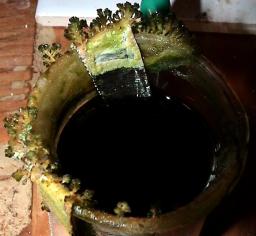
Look at the funny solution when NaCO3 comes out of a solution with a bunch
of food dyes in it, looks a lot like broccoli florettes the way mom used to
overcook them. The beaker is only a tiny 50ml beaker and that green cliplead
is a small one
|
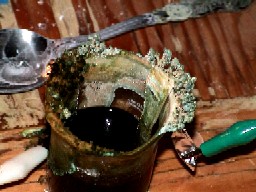
Time to clean up the mess, this is 48 hours of crystal growth.
|
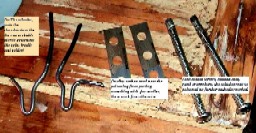
Various things used for cathodes, used carbon too.
Carbon Steel rusts too quickly, Carbon rods seem to allow much more conduction in the reverse direction.
|
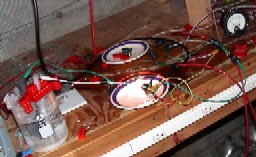
Bakingsoda solution with Aluminum cathode and othermetal(iron) anode.
|
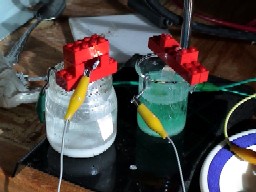
This is two borax(Na2B4O7) soln diodes with Al anodes and Sn/Pb cathodes. Only problem with Sn/Pb cathodes is I suspect the Sn slowly poisons the soln.
|
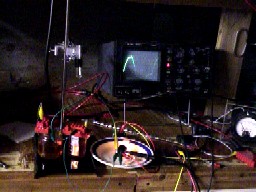
This is two borax(Na2B4O7)soln diodes with Al anodes and Fe cathodes. this seems to be the best so far
|
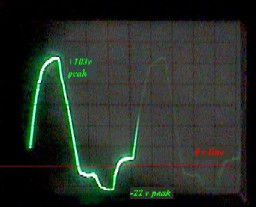
The peak's are pretty much the +input voltage (100v here) the trough is at about -23v.
|
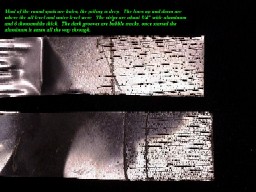
These aluminum strips are 3/4" wide and 6 thousandths thick. The pitting is heavy and the round pits are all the way through. The lines across the width are at the oil and water levels. The bubble tracks going up are deep and all the way through in spots. These are bubble tracks and once started continue until the aluminum is gone.
|
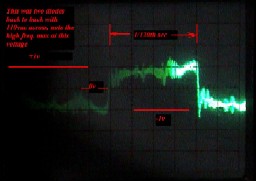
For some reason there is some high frequency right around the point where the tips of the peaks start hitting 2x the breakdown voltage so this shows a 1v60hz pk-pk leakage across the load. with 110vac input.
|
|
The luminescense is dependant on the quality of the oxide layer that's been laid down. I had run the back to back configuration for a few days with the level of solution about half way up the plates. Then I put the plates in a smaller container and put much more solution up the plates. The original oxide layer was significantly brighter. The line of 'gunk' where the original solution topped out on the plates is brighter and the new line where the solution tops out on the plates is also brighter.
|
This is interesting, the 60khz noise on the reversed biased diodes seems to be
coincident with the oxide layer production. Wonder what would
happen if I pumped 60khz through the solution...
The brightness of a plate seems to be dependant on the surface area of the *OTHER* plate(s)
(which is suggestive)
|








